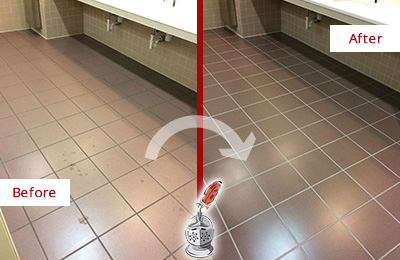Looking for Indicators of Water Damage in the Bathroom
Free EstimatesWe've discovered this post involving Common Causes of Water Damage in a Bathroom below on the net and concluded it made sense to talk about it with you here.

The bathroom is very susceptible for moist build-up and possible water damage as a result of the regular use water in it. This short article offers basic inspection strategies to help identifying water damage threats.
The regular use water in the restroom makes it exceptionally vulnerable for damp accumulation as well as possible water damage. By evaluating it routinely, you can lower water related problems.
The following set of examinations is easy to do and must be done as soon as in every three months in order to maintain your washroom in good shape and also to prevent prospective water problems caused by the tub, the shower, pipeline joints and plumbing, sinks, cupboards, and also the toilet
Do not overlook doing these inspections as well as be complete while performing them. Keep in mind that these easy assessments can conserve you a great deal of cash by giving early indications for water damage
Sinks and Cabinets
Sinks as well as cupboards are subjected to dampness and also humidity daily and are typically ignored. Evaluate routinely under the sink and on the countertop above it. Repair any drip in the trap as it may suggest drain troubles. Check out the sink, slow draining pipes may indicate a blocked drain. Change sink seals if they are split or loosened.
Bath tub and also Shower
The shower and also bathtub call for unique focus as well as upkeep. Inspect the ceramic tiles and replace if cracked. Make sure that there is no missing cement in between the ceramic tiles. Examine and replace fractured caulking at joints where the wall surfaces fulfill the flooring or the tub. Clogged drains and also pipelines issues will avoid the bathtub from drying out and also might indicate serious troubles under the tub. Speak with a professional immediately to stop architectural damage. Take note of stainings or soft locations around the tub walls as they might suggest an interior leak.
Plumbing
Signs for water damages are difficult to spot since the majority of pipelines are installed inside the wall surfaces.
Pay unique attention to floor covering as well as walls dampness as well as stains as they might suggest an invisible plumbing trouble. Inspect moisture degrees in adjoining rooms also.
The Commode
The bathroom is an at risk water junction. Examine the water lines as well as look for leaks around the commode seat, in the hose, and also under the water tank. If you find any signs of wetness on the floor around the bathroom, look for leaks in the toilet edge and storage tank seals.
Realize that hanging toilet dish deodorants enhances the opportunities for clogs.
Water Damage Signs In The Bathroom To Avoid Cleanup
Musty smell
This is one of the easiest signs to catch because musty smells are so odorous. The damp, earthy, moldy smell should be a big red flag. The smell will develop when moisture gets trapped in surfaces, and begins to facilitate mold growth. Leaking pipes under cabinets, inside walls, and behind shower fixtures will cause moisture to stay trapped and not dry, which will lead to mold growth and spread. As soon as you notice any musty smells in your bathroom, have it checked for hidden water damage and cleanup signs.
Visible mold
If the smell isn’t there to give it away, sometimes you will actually see mold growth. Finding mold in your bathroom is a serious problem, because mold is very harmful to your health. By the time mold growth is visible, it also means that water damage has already occurred and been present for some time. The only way the mold problem can be resolved is to find the source of the moisture and get it stopped. To safely and adequately remove mold, you need to have professionals handle the remediation. Do not waste any time in getting mold problems addressed, fixed, and sanitized so that you can protect you and your family from the many respiratory symptoms caused by mold exposure.
Damaged floors
Bathroom floors should be able to withstand some exposure to water while still remaining in good condition. However, when excess exposure or water leaks occur, they will begin to damage even the most water-resistant flooring. If you notice any cracking, bubbling, staining, or warping on your bathroom floors, there is probably a water leak somewhere causing the distortion. If you notice areas of the floor have become softer, or even have a spongy feeling, there is probably damage to the subfloor. Subflooring is typically made up of plywood. When plywood is exposed to water or moisture, it will absorb it. Once it has become saturated, the weight of the excess water will cause the wood to swell and soften. Check the floors in your bathroom frequently to catch any of these sings before they lead to damaged subflooring.
Changes on walls
When water leaks behind walls, it will cause changes in the drywall. Peeling plaster, blistering paint, and soggy wallpaper are all good indicators that excess water is building up behind the wall. Water leaking behind drywall will cause it to swell and be soft to the tough. If you start to notice gaps along the trim of your walls, or where tile meets the wall, it could also be a strong indicator that there is a leak behind the wall. Any changes, distortion, or damage on the walls should be evaluated as soon as you notice it to prevent further water damage and cleanup.

I stumbled upon that blog entry about Preventing Water Damage in the Bathroom while browsing on the search engines. Sharing is good. One never knows, you might be doing someone a favor. Thank you so much for going through it.
Check Us Out